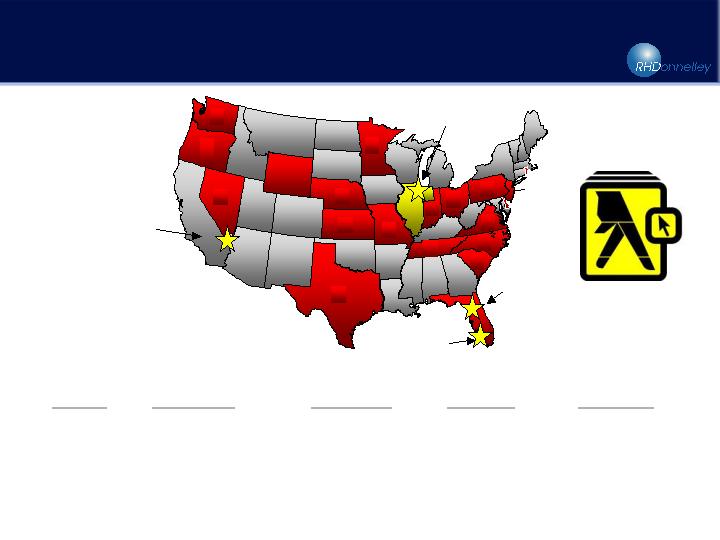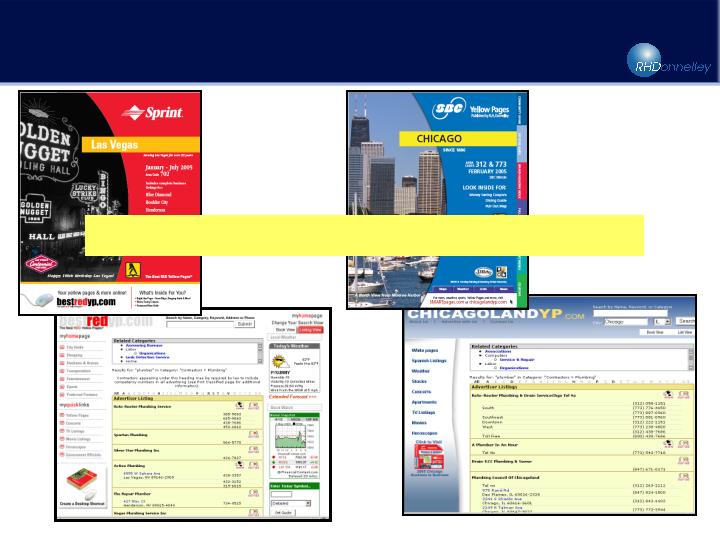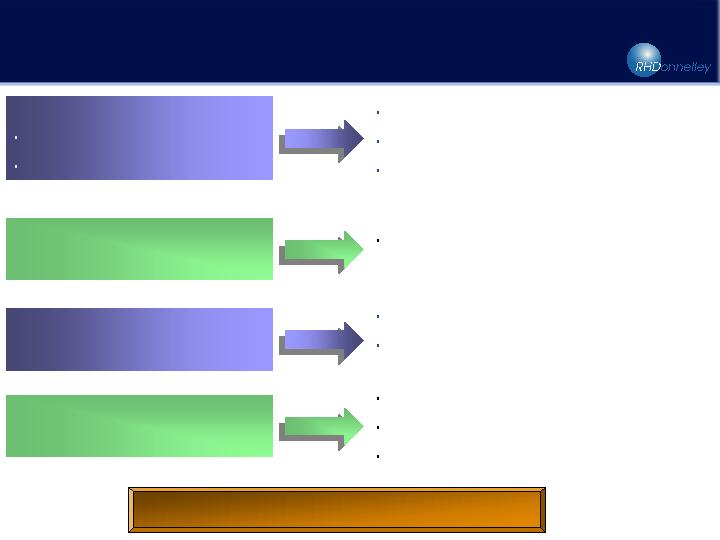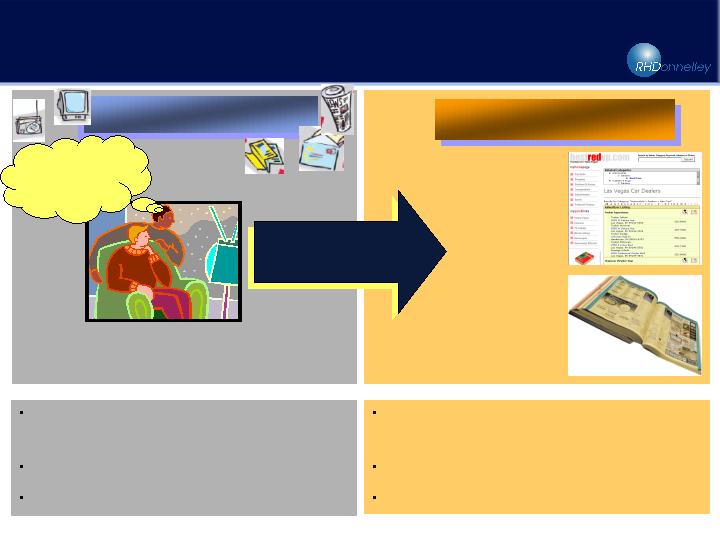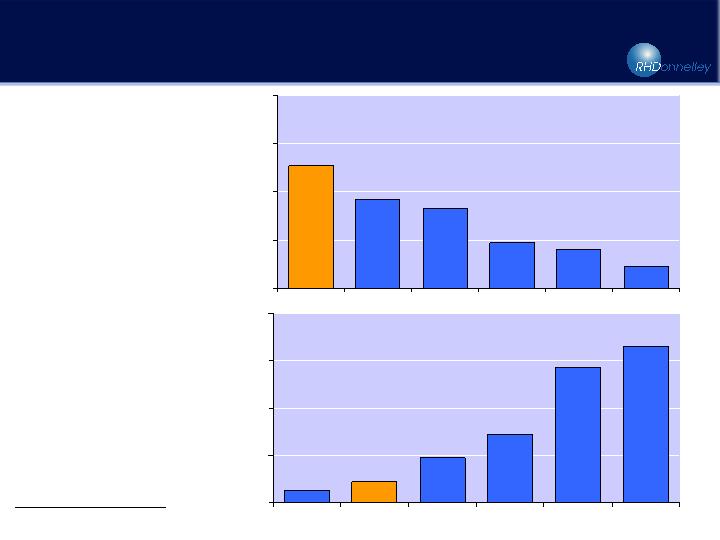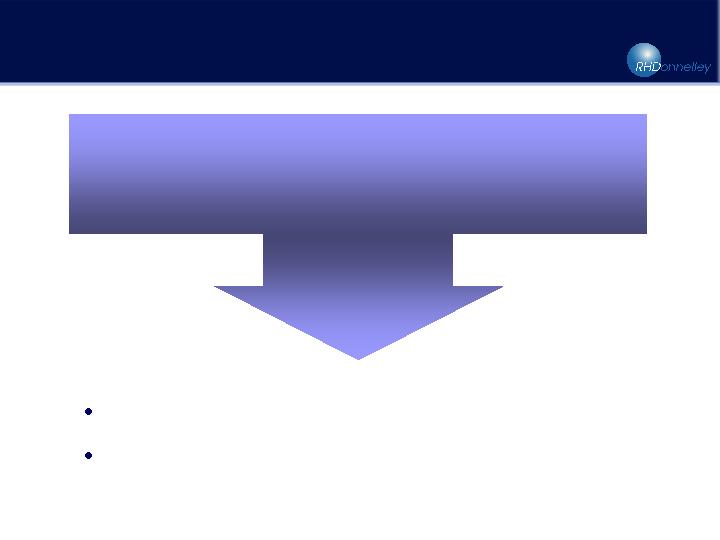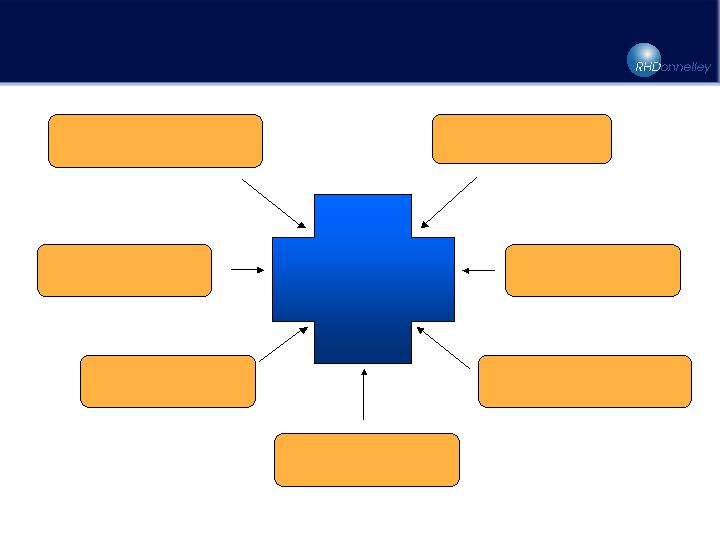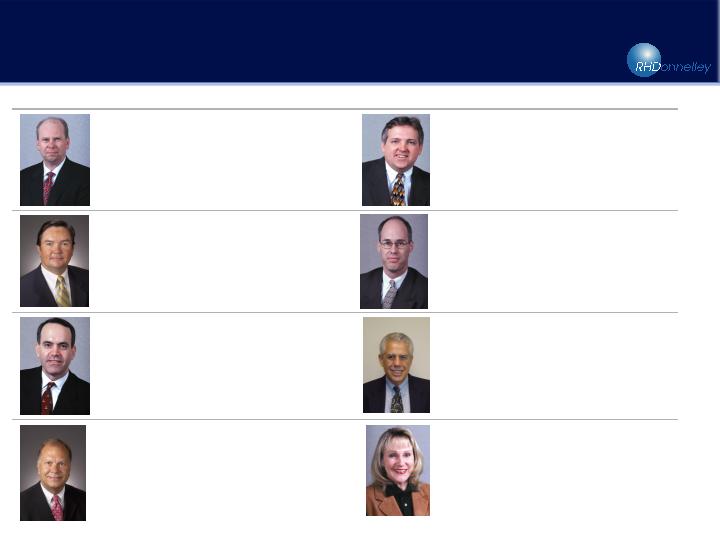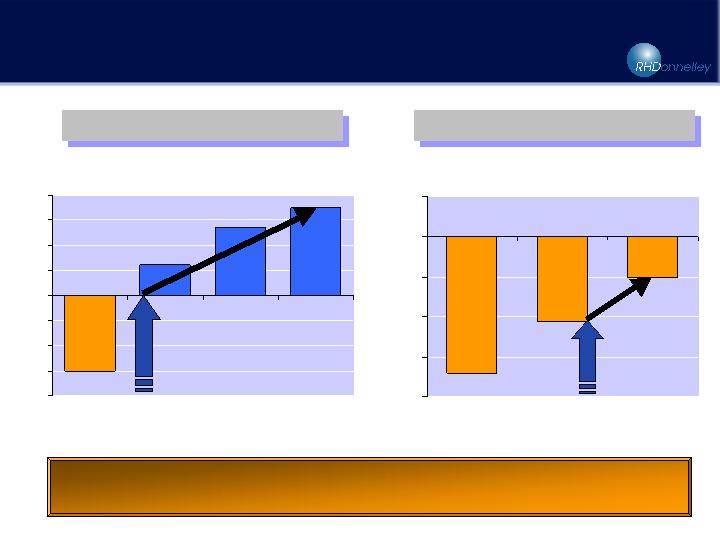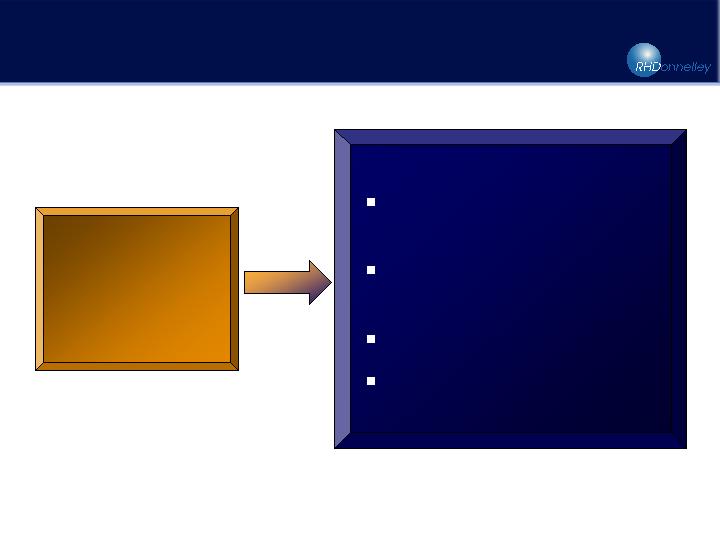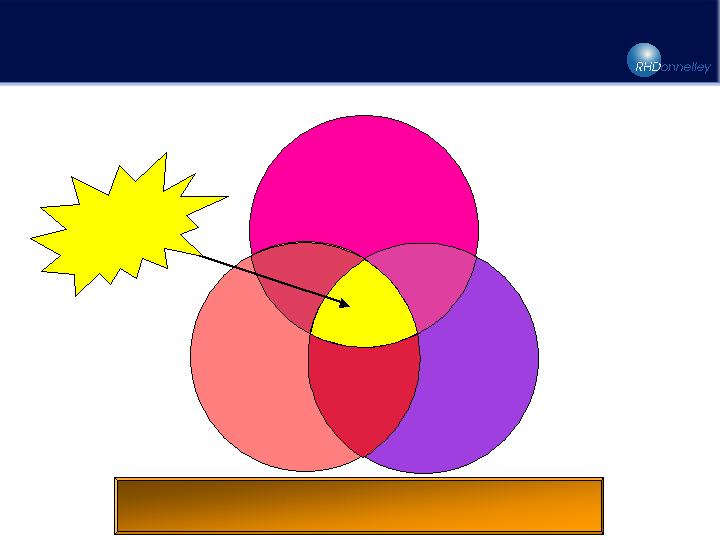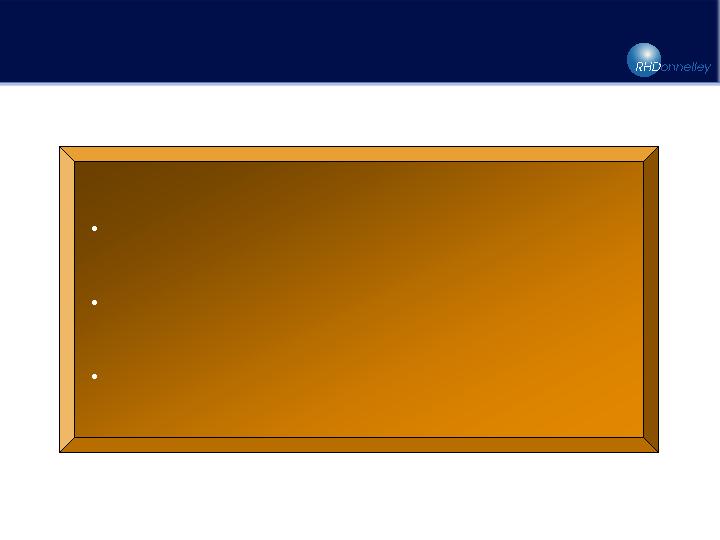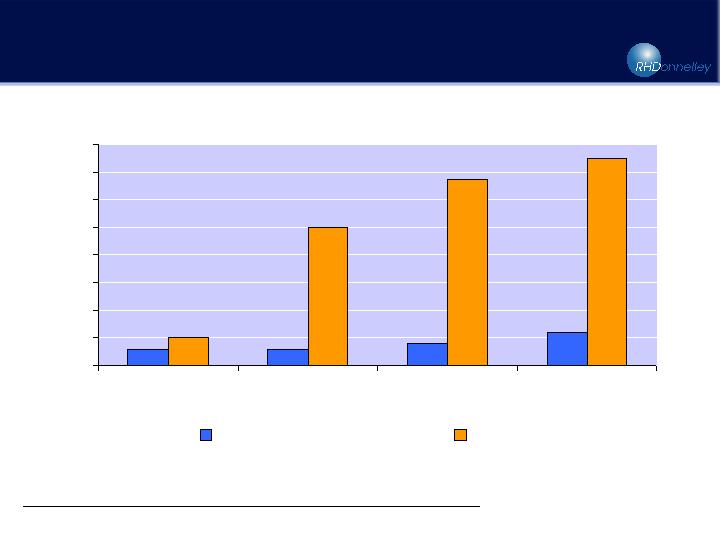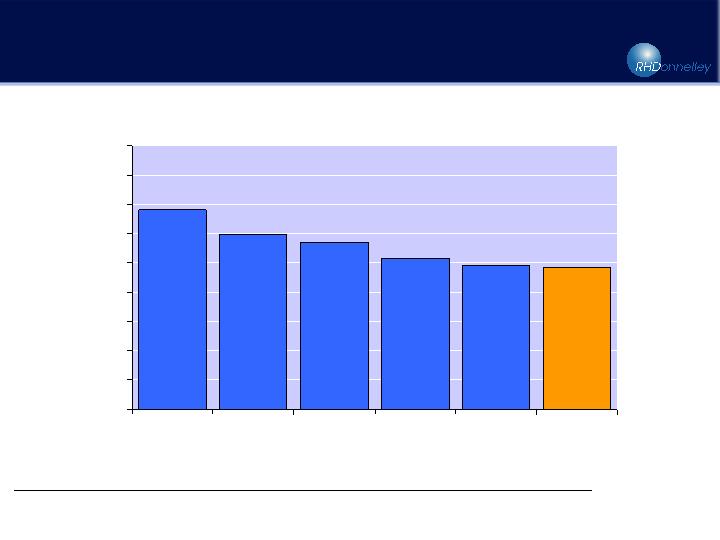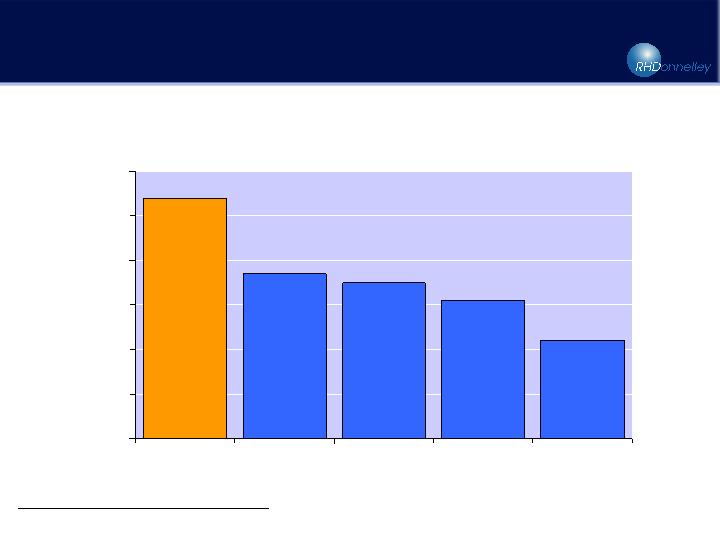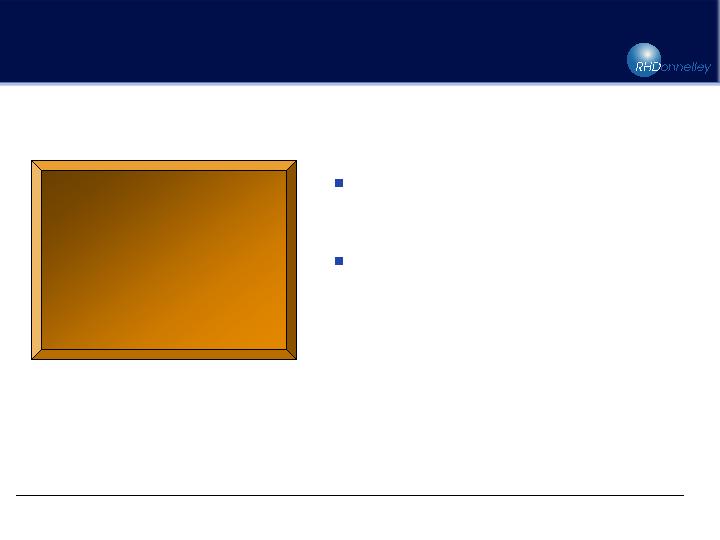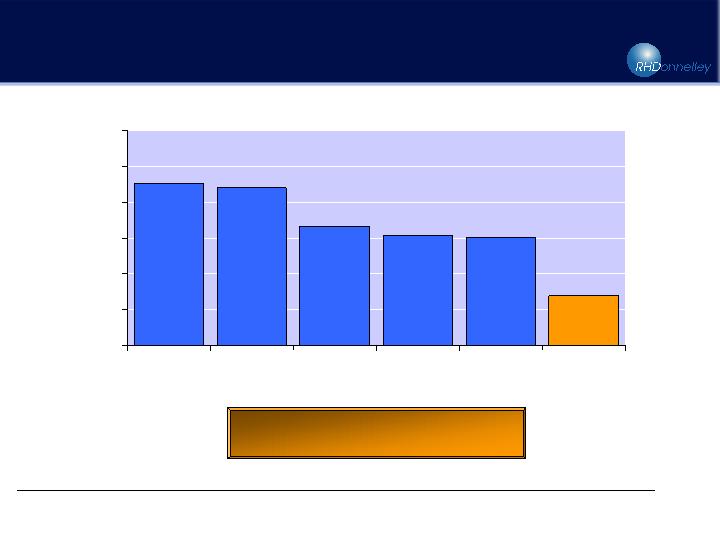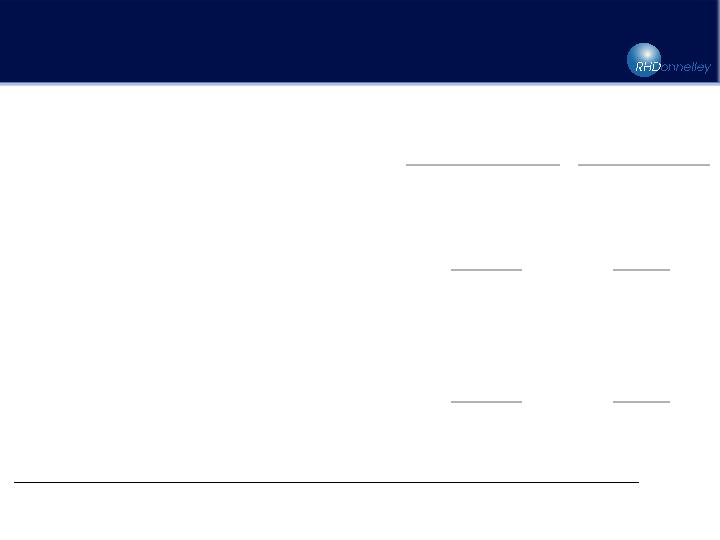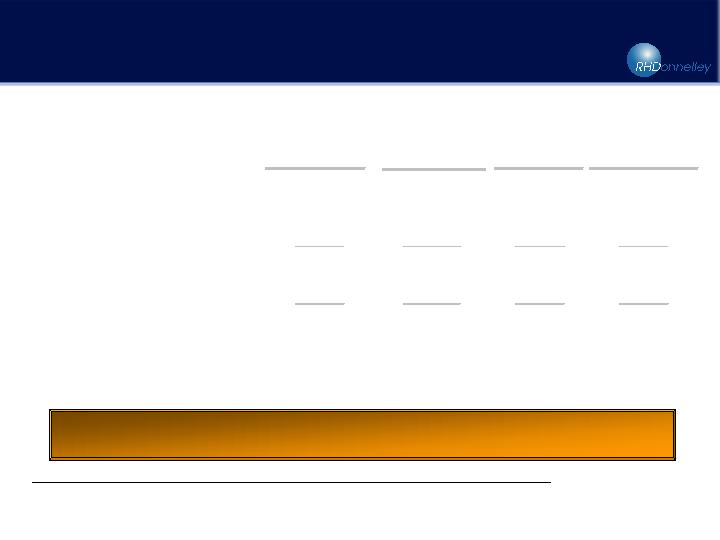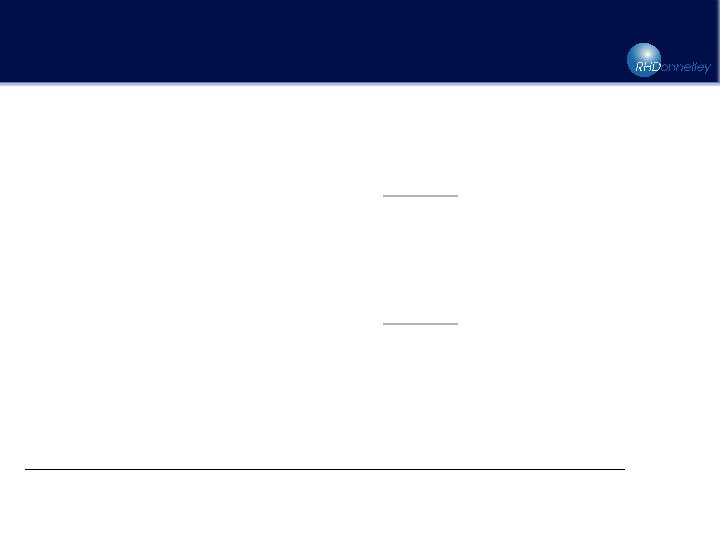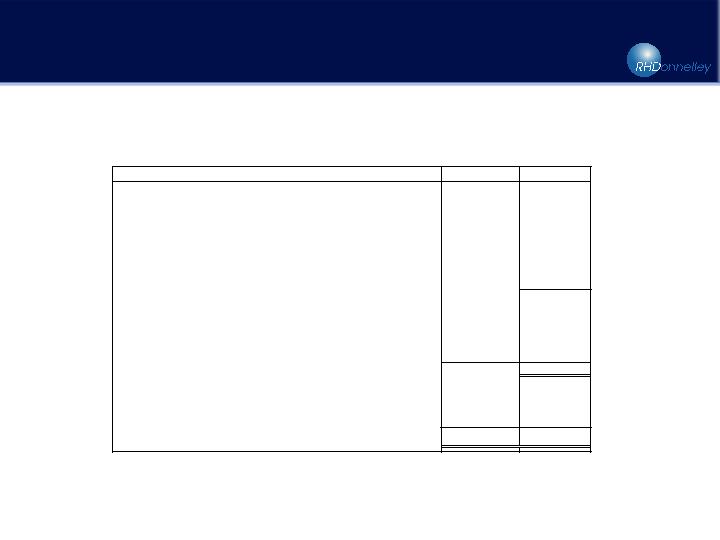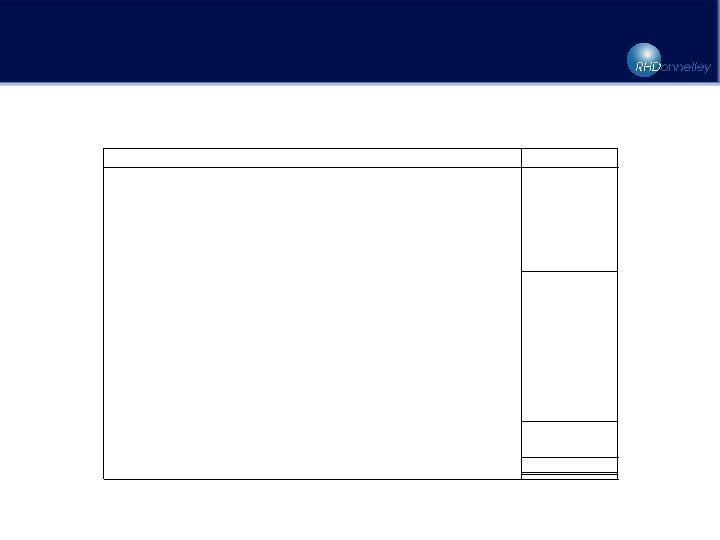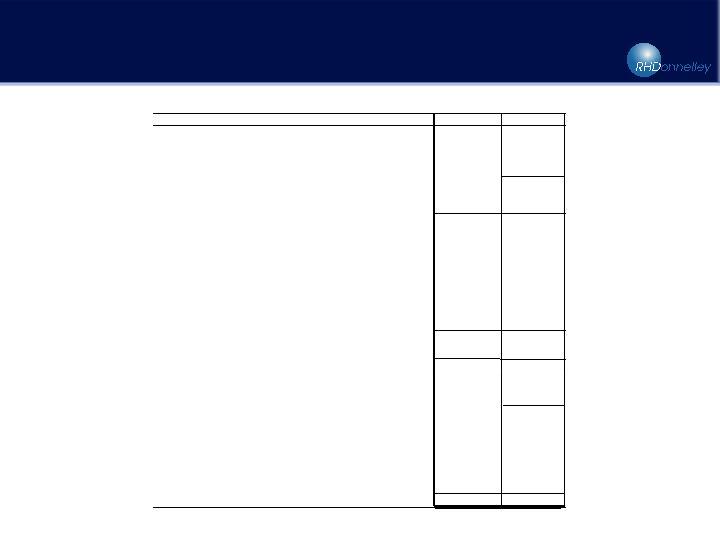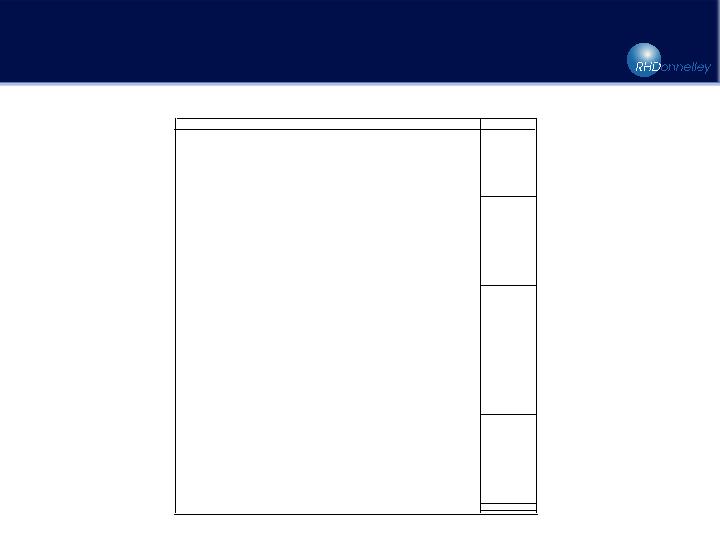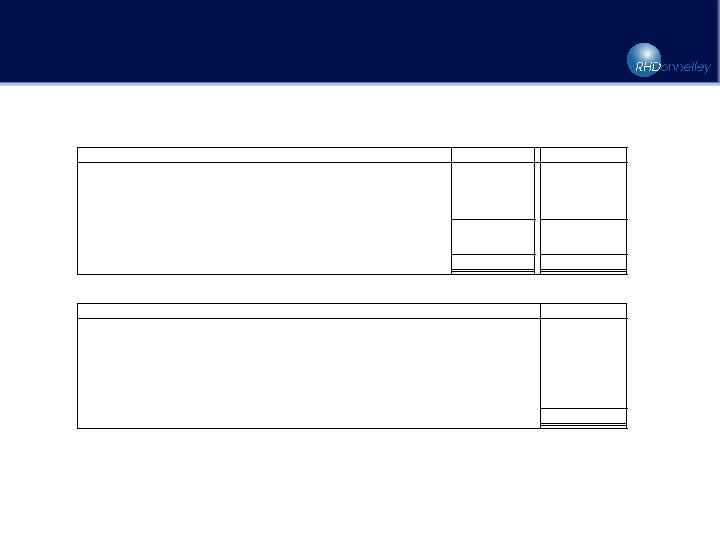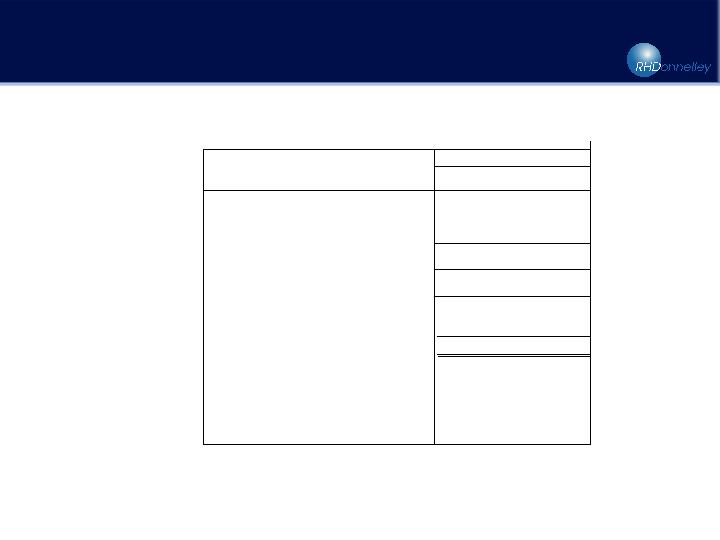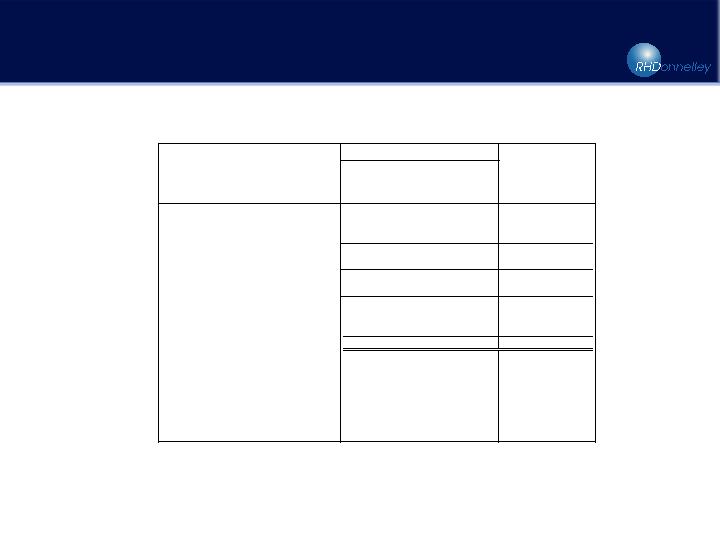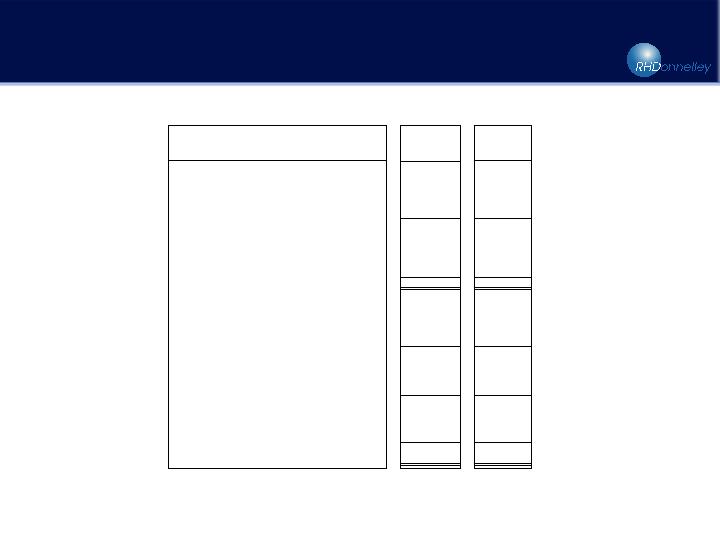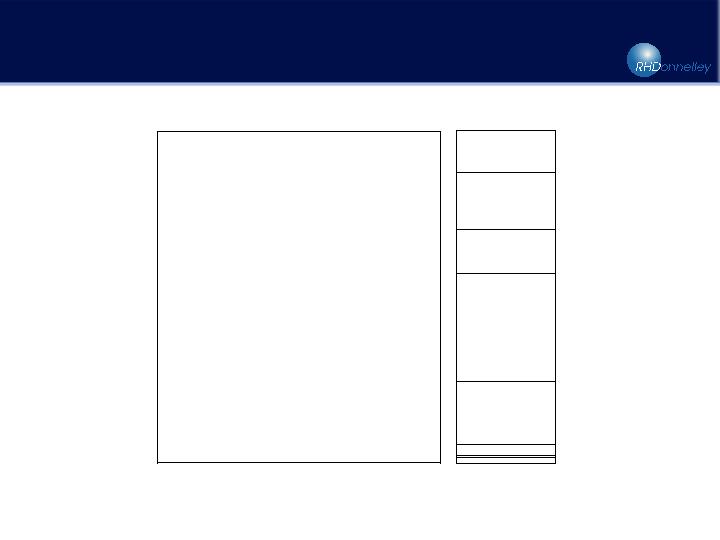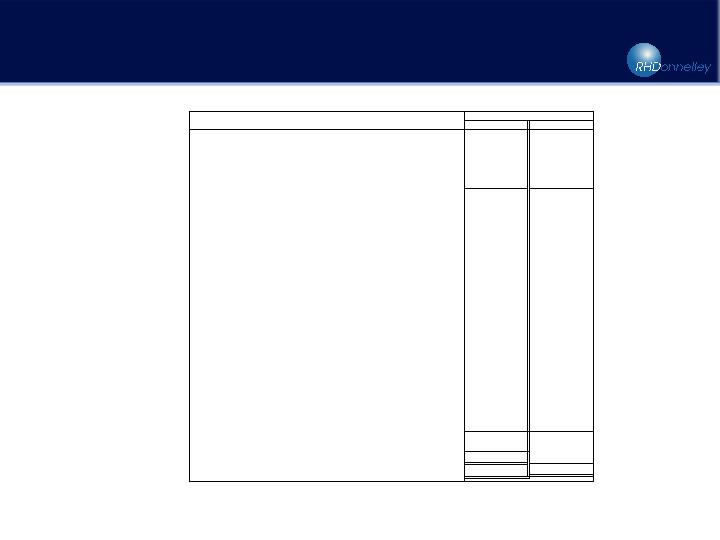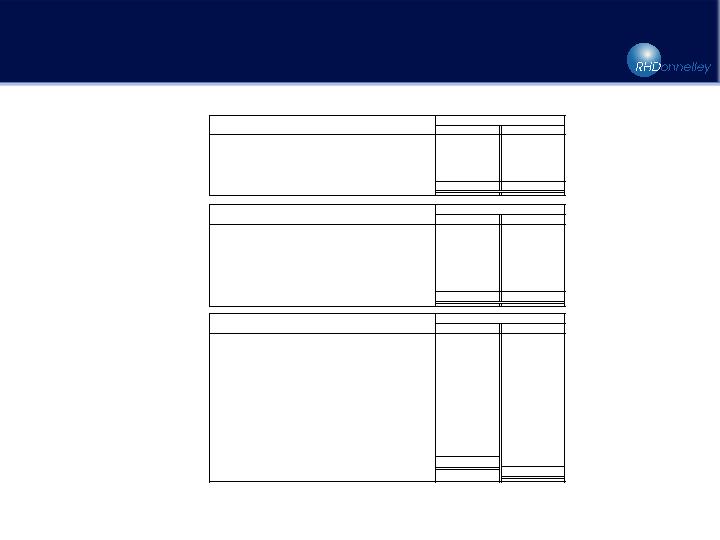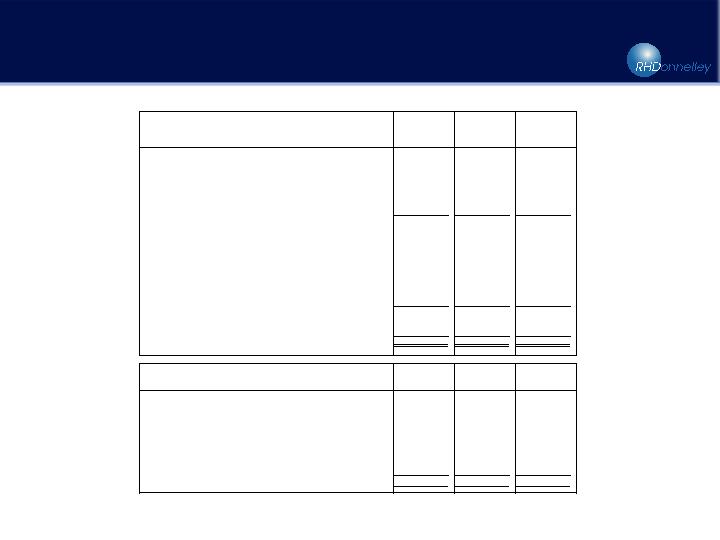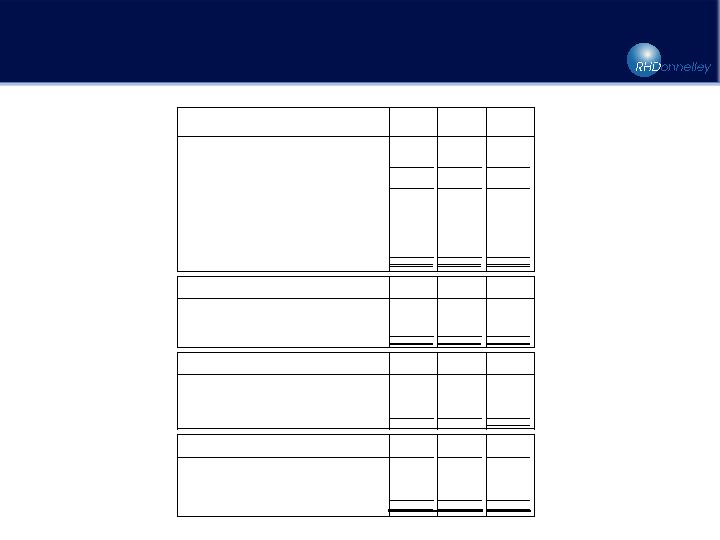
Notes to Schedules
Schedule 13
51
1)
Publishing revenue is recognized using the deferral and amortization method of accounting. Under this method, when a directory is published, the
publication sales value is deferred and amortized into the income statement ratably over the life of the directory, which is typically 12 months.
Publication sales represent the billable value of advertising sales in directories that published during the period. If events occur during the current period
that affect the comparability of sales to the prior year period, such changes in directory publication dates, then prior year sales are adjusted to conform to
the current period presentation and to maintain comparability.
2)
EBITDA represents earnings before interest, taxes, depreciation and amortization. Adjusted pro forma EBITDA represents adjusted pro forma earnings
before interest, taxes, depreciation and amortization. EBITDA and Adjusted pro forma EBITDA are not measurements of operating performance
computed in accordance with GAAP and should not be considered as a substitute for operating income or net income prepared in conformity with GAAP.
In addition, EBITDA may not be comparable to similarly titled measures of other companies.
3)
As a result of the SPA Acquisition and SBC Directory Acquisition and the related financings and associated purchase accounting, 2004 and 2003
results reported in accordance with GAAP are not comparable, nor do they reflect the Company’s underlying operational or financial performance.
Additionally, these considerations with respect to the SBC Directory Acquisition will also affect the comparability of our 2004 and 2005 reported GAAP
results. Accordingly, management is presenting adjusted pro forma information that, among other things, eliminates the purchase accounting effects of
each acquisition and assumes the SBC directory Acquisition and related financing occurred on January 1, 2003. Management believes that the
presentation of this adjusted pro forma information will help financial statement users better and more easily compare current period underlying
operating results against what the combined company performance would more likely have been in the comparable prior period. While management
believes the adjusted pro forma results reasonably represent results as if the businesses had been combined for the full years 2003 and 2004, because
of the differences in the application of accounting policies and practices between the Company and the acquired entities, management does not believe
these adjusted pro forma amounts are strictly comparable, nor are they necessarily indicative of results for future periods. The pro forma results assume
that the appropriate pro rata portion of the revenues and direct costs of directories acquired in connection with the SPA Acquisition and SBC Directory
Acquisition that published prior to the respective acquisition, plus directories that published during the month of each acquisition, were recognized during
the period pursuant to the deferral and amortization method. As a result of purchase accounting, these pre-acquisition revenues and expenses are not
included in reported GAAP results. For the periods prior to the SBC Directory Acquisition, pro forma interest expense assumes that the transaction occurred
at the beginning of the periods presented and is based on the incremental debt actually incurred at the time of the acquisition and the interest rate in
effect at the time of the acquisition with no assumption of additional debt repayments. As a result of purchase accounting required by GAAP, we
recorded the deferred directory costs related to directories that were scheduled to publish subsequent to each of the SPA Acquisition and SBC Directory
Acquisition, at their fair value, determined as (a) the estimated billable value of the published directory less (b) the expected costs to complete the
directories, plus (c) a normal profit margin. We refer to this purchase accounting entry as “cost uplift.” This “cost uplift” with respect to each transaction
has also been removed in the adjusted pro forma results.
4)
Publishing revenue is recognized using the deferral and amortization method of accounting. Under this method, when a directory is published, the
publication sales value is deferred and amortized into the income statement ratably over the life of the directory, which is typically 12 months.


